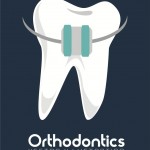
Orthodontic treatment is time consuming so there is increasing interest in methods of reducing treatment times. A number of surgical approaches have been reported e.g. osteotomies and corticotomies as well as less invasive techniques such as piezocisions, piezopuncture, and micro-osteoperforations. Micro-osteoperforation is a relative new approach that can be performed by the orthodontist.
The aim of this review was to evaluate the effects of micro-osteoperforation on the rate of tooth movement in patients undergoing orthodontic treatment.
Methods
Searches were conducted in the, Medline, Embase, Cochrane CENTRAL, ISI web of science and Scopus databases as well as, the trials registry database of World Health Organization, the USA (via clinicaltrials.gov), India (via ctri.nic.in), and China (via chictr.org.cn). Searches were also undertaken in a number of journals (American Journal of Orthodontics and Dentofacial Orthopedics, European Journal of Orthodontics, The Angle Orthodontist, and The Korean Journal of Orthodontics). There was no restriction on language or date of publication. All human studies evaluating the effects of micro-osteoperforation were considered.
Two reviewers independently selected studies abstracted data and assessed risk of bias with disagreements being resolved by discussion. Risk of bias was assessed using the Cochrane tool. Overall quality and certainty of evidence was assessed using the Grading of Recommendations Assessment, Development and Evaluation system (GRADE). The main outcome was rate of tooth movement. Mean difference (MD) and 95% confidence intervals (CI) were used for comparisons with data being combined using inverse-variance random-effect meta-analysis.
Results
- 6 randomised controlled trials (RCTs) involving 384 patients were included, 4 were split-mouth studies and 2 of parallel-arm design.
- 4 trials followed up patients for 4 weeks, 1 RCT for 12 weeks and 1 for 16 weeks.
- 3 studies only considered the rate of maxillary canine retraction.
- No studies used the same assessment methods.
- I study was considered to be at low risk of bias, 5 at unclear risk.
- Meta-analysis (6 studies) showed a significantly higher rate of canine retraction per month in the micro-osteoperforation group, MD = 0.45 mm (95%CI; 0.17-0.74).
- Patients did not report any significant differences in terms of pain severity levels after micro-osteoperforation.
- 1 study reported higher amounts of root resorption among patients undergoing micro-osteoperforation.
Conclusions
The authors concluded: –
This meta-analysis and the systematic review showed that the difference in the rate of canine retraction after performing the micro-osteoperforation was statistically significant but clinically not very substantial (0.45 mm increase in month). These results were similar with regard to different malocclusions, jaws, and micro-osteoperforation methods. The patients did not report any significant differences in terms of the pain severity levels after micro-osteoperforation. The pain severity level was mostly related to tooth movements and was highest during mastication. With regard to the adverse effects after micro-osteoperforation, one study observed higher amounts of root resorption among patients undergoing micro-osteoperforation. No other studies revealed similar results and adverse effects for micro-osteoperforation. The use of micro-osteoperforation can be recommended after weighing the benefits and disadvantages this intervention can bring for each patient.
Comments
A review protocols was published in PROSPERO and a detailed search strategy has been undertaken with the reviews adopting a good methodological approach. However, only 6 relatively small studies have been included with a majority having a follow up period of only one month. While all the included studies reported on canine retraction time different assessment approaches were employed in each study. The reviewers did find a statistically significant benefit in favour of micro-osteoperforation although the benefit was small, at 0.45 mm per month.
While a small benefit has been demonstrated this should be viewed very cautiously as the available studies are small and of short duration so this may not offer any clinically important benefit particularly over the full course of orthodontic treatment. Five of the included studies have been published since the 2015 Cochrane review on surgical interventions to accelerate orthodontic treatment (Dental Elf – 6th July 2015). At that time the Cochrane review recommended that future research should be prospective and assess the full course of treatment with longer follow up times to properly assess whether there is any benefit.
Links
Primary Paper
Shahabee M, Shafaee H, Abtahi M, Rangrazi A, Bardideh E. Effect of micro-osteoperforation on the rate of orthodontic tooth movement-a systematic review and a meta-analysis. Eur J Orthod. 2019 Jun 19. pii: cjz049. doi:10.1093/ejo/cjz049. [Epub ahead of print] PubMed PMID: 31215993.
Other references
Kevin O’Brein’s Blog – 22nd July 2019
Dental Elf – 6th July 2015
